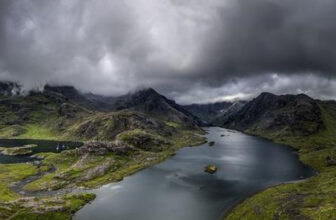Mastering Black and White Photography: Essential Tips
GoogleAds

In the world of photography, capturing images in black and white remains a timeless and powerful technique. Mastering the art of black and white photography requires a keen eye for composition, lighting, and contrast. In this article, we will explore essential tips to help you take your black and white photography to the next level. Whether you’re a seasoned photographer looking to refine your skills or a newcomer eager to learn the ropes, these tips will provide you with the tools and knowledge needed to create stunning monochrome images.
Developing a Strong Composition
When it comes to mastering black and white photography, one of the key elements to focus on is . A well-composed black and white photograph can evoke emotions, tell a story, and capture the viewer’s attention in a unique way.
To create a strong composition in black and white photography, it is essential to pay attention to the following tips:
- Contrast: Contrast is key in black and white photography. Make sure to include a wide range of tones in your photos, from pure black to pure white, to create visual interest and depth.
- Leading Lines: Use leading lines to draw the viewer’s eye into the photo and towards the main subject. Experiment with different angles and perspectives to create dynamic compositions.
- Simplicity: Keep your compositions simple and uncluttered. Remove any distractions from the frame and focus on the main subject to create a powerful image.
- Texture: Black and white photography is great for highlighting texture. Look for interesting textures in your environment and use them to add depth and tactile quality to your photos.
Additionally, paying attention to composition techniques such as the rule of thirds, framing, and symmetry can help you create visually appealing black and white photographs. Experiment with different compositions and techniques to find what works best for your style and subject matter.
| Composition Tip | Description |
|---|---|
| Rule of Thirds | Divide your frame into thirds both horizontally and vertically, and place your main subject at the intersection points. |
| Framing | Use elements in the scene to frame your main subject and draw attention to it. |
| Symmetry | Create balanced compositions by using symmetry and reflection in your photos. |
Understanding Light and Shadows
Black and white photography is a classic art form that relies heavily on . To master this technique, photographers must have a keen eye for contrast and composition. Here are some essential tips to help you elevate your black and white photography game:
1. Focus on Texture: Black and white photography emphasizes texture more than color. Look for subjects with interesting textures such as weathered buildings, tree bark, or fabric. Experiment with different angles and lighting to highlight the textures in your photos.
2. Play with Light and Shadows: Shadows play a crucial role in black and white photography, creating depth and adding drama to your images. Experiment with different types of lighting, such as harsh sunlight or soft diffused light, to create striking light and shadow patterns in your photos.
3. Use Contrast to your Advantage: High contrast is key to impactful black and white photos. Look for scenes with a wide range of tones, from pure white to deep black. Adjust your exposure settings to maximize contrast and make your images pop.
4. Simplify your Composition: Black and white photography is all about simplifying your composition to focus on the essentials. Look for clean lines, shapes, and patterns that can create a strong visual impact. Keep distractions to a minimum and let your subject shine.
| Subject | Texture | Lighting |
|---|---|---|
| Portrait | Smooth skin | Soft diffused light |
| Landscape | Rocky terrain | Harsh sunlight |
Choosing the Right Subjects
When it comes to mastering black and white photography, one of the most important aspects to consider is for your images. The subjects you choose will ultimately determine the mood, composition, and overall impact of your photos. Here are some essential tips to help you select the perfect subjects for your black and white photography:
1. Contrast: Look for subjects that have strong contrasts in tones and textures. Black and white photography relies heavily on contrast to create visual interest, so choosing subjects with a wide range of tones will make your images stand out.
2. Texture: Pay attention to the textures in your subjects. Textures can add depth and dimension to your black and white photos, making them more visually compelling. Look for subjects with interesting surfaces, such as weathered wood, rough brick, or smooth glass.
3. Shapes and patterns: Explore subjects with interesting shapes and patterns, as these can create striking compositions in black and white photography. Look for geometric shapes, repeating patterns, or unique forms that can add visual interest to your images.
4. Light and shadows: Consider how light and shadows play off of your subjects. Black and white photography is all about capturing the play of light and dark, so look for subjects that are well-lit or cast interesting shadows. Experiment with different lighting angles to see how they affect the mood of your photos.
Using Filters for Contrast
When it comes to mastering black and white photography, one essential technique to utilize is the use of filters for contrast. Filters can help you enhance the tones in your photos and make your images more dynamic and visually appealing. Below, we’ll explore some common filters that can help you achieve stunning contrast in your black and white images.
1. Red Filter
A red filter is a popular choice for black and white photography as it darkens blue skies and enhances the contrast between different shades of gray. This filter can be particularly useful when shooting outdoor landscapes or portrait photography, where you want to make your subject stand out against the background.
2. Orange Filter
Similar to the red filter, an orange filter can also help boost contrast in your black and white photos. It darkens blues and greens, making them appear richer and more dramatic. This filter is versatile and can be used in a variety of shooting scenarios to add depth and dimension to your images.
3. Yellow Filter
A yellow filter is a great choice for adding a subtle contrast to your black and white images. It can help lighten skin tones and soften harsh shadows, creating a more flattering look in portrait photography. The yellow filter is a go-to option for photographers looking to achieve a classic, timeless aesthetic in their work.
4. Green Filter
While less commonly used than red, orange, or yellow filters, a green filter can still be a valuable tool for enhancing contrast in black and white photography. This filter can help improve the tonal separation in foliage and landscapes, making greens appear more vibrant and distinct. Experimenting with a green filter can lead to unique and compelling compositions in your images.

Post-Processing Techniques
When it comes to black and white photography, mastering is essential to achieving stunning results. From adjusting contrast to fine-tuning tones, there are several tips that can help take your monochrome images to the next level.
One key tip is to pay attention to the levels and curves in your editing software. Manipulating these can help you achieve the desired contrast in your black and white photos. By adjusting the black and white points, as well as the midtones, you can create a more dynamic and impactful image.
Another essential technique is to focus on the details in your black and white photos. Enhancing sharpness and clarity can make a world of difference in the final result. Utilize tools like sharpening masks and clarity sliders to bring out the textures and finer elements in your images.
Experimenting with different filters can also help you achieve the perfect black and white look. Whether you prefer a more dramatic high-contrast style or a softer, more subtle approach, there are a variety of filters that can help you achieve your desired aesthetic.
Lastly, don’t be afraid to get creative with your black and white photography. Play around with different techniques, such as dodging and burning, split toning, and vignetting, to add depth and visual interest to your images. Remember, post-processing is just as much an art form as photography itself, so don’t be afraid to experiment and push the boundaries of your creativity.

Experimenting with Different Styles
Black and white photography is a timeless art form that can create striking and evocative images. Whether you’re new to photography or a seasoned pro, mastering the art of black and white photography can take your skills to the next level. Here are some essential tips to help you capture stunning black and white images:
1. Pay Attention to Contrast
- Black and white photography relies heavily on contrast to create impact. Look for scenes that have a strong contrast between light and dark elements to make your images more dynamic.
- Experiment with different lighting conditions to see how they affect the contrast in your photos. Overcast days can create a softer, more subtle contrast, while bright sunlight can produce harsh, dramatic shadows.
2. Focus on Texture and Detail
- In black and white photography, texture and detail become more prominent since color is not a factor. Look for subjects with interesting textures, like weathered wood, cobblestone streets, or wrinkled fabric, to add depth and visual interest to your images.
- Try using a shallow depth of field to focus on a specific texture or detail while blurring the background to create a sense of depth and dimension.
3. Use Filters to Enhance Tonal Range
- Filters can help enhance the tonal range in your black and white photos by darkening or lightening specific areas of the image. Experiment with red, orange, yellow, or green filters to see how they affect the contrast and mood of your photos.
- Consider using a polarizing filter to reduce glare and enhance the clarity of textures in reflective surfaces like water or glass.
4. Experiment with Composition
- Composition plays a crucial role in black and white photography. Try experimenting with different compositions, such as leading lines, framing, symmetry, or the rule of thirds, to create visually compelling images.
- Consider using negative space to draw attention to your subject and create a sense of balance and harmony in your photos.
5. Convert Images to Black and White in Post-Processing
- While shooting in black and white mode on your camera can be convenient, converting color images to black and white in post-processing gives you more control over the final result. Experiment with different conversion techniques, like using presets, adjusting the levels and curves, or adding grain for a vintage feel.
- Don’t be afraid to experiment with different styles and techniques to find what works best for you. The beauty of black and white photography lies in its versatility and ability to evoke emotion and tell a powerful visual story.

Studying the Work of Masters
Black and white photography has a timeless quality that can elevate any image to a work of art. Mastering this classic technique requires a keen eye for composition, lighting, and contrast. In this post, we will explore essential tips for creating striking black and white photographs inspired by the masters of the craft.
1. Study the Masters:
Take the time to analyze the work of iconic black and white photographers such as Ansel Adams, Dorothea Lange, and Henri Cartier-Bresson. Pay attention to their use of light, shadow, and framing to inform your own photography practice.
2. Focus on Contrast:
Black and white photography relies heavily on contrast to create impact. Experiment with different lighting conditions to achieve dramatic light and shadow patterns in your images. Remember, the greater the contrast, the more dynamic the final result.
3. Simplify Your Composition:
Avoid clutter and distractions in your black and white photographs by simplifying your composition. Look for strong lines, shapes, and textures that will stand out in monochrome. Remember, less is often more in black and white photography.
| Tip | Description |
|---|---|
| 4. Embrace Texture: | Texture plays a crucial role in black and white photography, adding depth and visual interest to your images. Look for rough surfaces, intricate patterns, and interesting details to enhance the tactile quality of your photographs. |
5. Experiment with Editing:
Post-processing is an essential part of black and white photography. Use editing tools to adjust brightness, contrast, and tonality to achieve the desired mood in your images. Don’t be afraid to experiment with different editing techniques to find your unique style.
Q&A
Q: What are the benefits of mastering black and white photography?
A: Black and white photography allows photographers to focus on composition, shapes, textures, and lighting without the distraction of color.
Q: What are some essential tips for capturing stunning black and white images?
A: Some essential tips include paying attention to contrast, using natural light to your advantage, experimenting with different editing techniques, and practicing regularly to hone your skills.
Q: How can photographers effectively use shadows in black and white photography?
A: Shadows can add depth and drama to black and white images. By strategically positioning your subject and utilizing natural or artificial light sources, you can create striking and dynamic compositions.
Q: What role does post-processing play in black and white photography?
A: Post-processing is crucial in black and white photography as it allows photographers to enhance contrast, adjust tones, and bring out details in their images. Experimenting with different editing techniques can help you achieve the desired mood and aesthetic in your photos.
Q: How important is composition in black and white photography?
A: Composition is key in any form of photography, including black and white. Paying attention to framing, leading lines, the rule of thirds, and negative space can help photographers create visually appealing and impactful images in monochrome.
In Conclusion
In conclusion, mastering black and white photography is a challenging yet rewarding endeavor. By following the essential tips outlined in this article, photographers can enhance their skills and create stunning monochrome images. Remember, practice makes perfect, so don’t be afraid to experiment and push your creative boundaries. With dedication and perseverance, you can master the art of black and white photography and capture timeless moments with unparalleled beauty. Keep shooting and stay inspired.
GoogleAds







